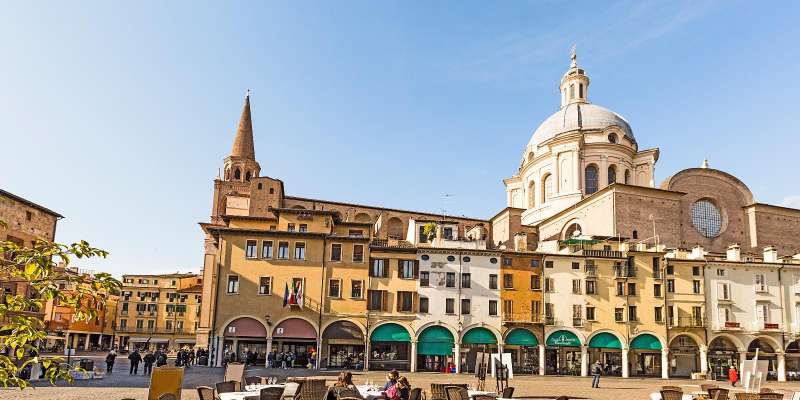- Home
- Useful Tips
- Mantua's best-preserved...
Mantua, a UNESCO-listed Renaissance jewel, holds a secret frustration for cultural travelers. Over 60% of visitors miss the city's exquisitely preserved 15th-century shop fronts, according to local tourism surveys. These architectural treasures blend seamlessly into Mantua's streetscape, their significance overshadowed by more famous landmarks like Palazzo Ducale. The problem isn't accessibility – these shop fronts stand in plain sight along bustling Via Orefici and Piazza Erbe – but recognition. Without context, you might walk past extraordinary examples of early retail architecture that survived wars, floods, and modernization. The pain point is real: returning travelers often express regret upon discovering they've overlooked these time capsules of daily Renaissance life. Their delicate terracotta decorations and original iron fixtures tell stories of Mantua's mercantile golden age, when the city rivaled Florence as a center of craftsmanship. Recognizing these unmarked treasures requires either serendipity or local knowledge – until now.


Why Mantua's shop fronts are Renaissance masterpieces in disguise
What makes these unassuming storefronts extraordinary becomes clear when you understand their historical context. During Mantua's 15th-century heyday under the Gonzaga dynasty, ground-level shops doubled as architectural showpieces for wealthy merchants. The surviving examples along Via Orefici showcase innovative design solutions – recessed entrances for crowd control, intricate brickwork patterns denoting guild affiliations, and rare 'sporti' (projecting upper stories) that maximized retail space. Local artisans employed the same craftsmen decorating palaces, explaining the exquisite terracotta frames around doorways. Unlike Florence's reconstructed streetscapes, these are original structures continuously used for commerce. The pharmacy at Piazza Erbe 13 has operated since 1480 behind its Gothic arched portal. Such preservation owes to Mantua's economic decline after the Renaissance – while other cities modernized, these shop fronts remained frozen in time, their practical designs still serving small businesses today.
The local's route to spotting hidden details in plain sight
Mantuans pass these architectural treasures daily, but know where to pause. Start at Pescherie di Giulio Romano, where fishmongers still work beneath vaulted loggias designed by Raphael's star pupil. Notice the iron hooks for hanging merchandise – original 16th-century features. Walk toward Piazza Erbe, pausing at Via Orefici 22's spice shop. Its recessed doorway preserves grooves from a sliding wooden barrier, a security system Renaissance merchants used. The real showstopper awaits at Via Orefici 30: a perfectly preserved goldsmith's shop with delicate terracotta columns framing the entrance. Local historians confirm this was where Gonzaga nobles commissioned jewelry. Across the square, Casa del Mercato's arcades showcase how shop fronts doubled as public gathering spaces. For optimal viewing, visit weekdays 8-10 AM when angled sunlight reveals delicate brick patterns most tourists miss. These subtle details transform random buildings into a walking timeline of retail architecture evolution.
Free resources versus guided tours – how to choose
While independent exploration has its charms, Mantua's shop fronts reveal their secrets reluctantly. The free municipal app offers a basic Renaissance walking route, but pinpoints only three shop fronts. Comparatively, local-led tours decode subtle features like guild symbols or explain why certain materials survived centuries. Some workshops still use original Renaissance-era cellars – access typically requires guide arrangements. For budget-conscious travelers, the tourist office's printed 'Merchant's Trail' map marks key locations with brief historical notes. However, visiting during Mantua's Festivaletteratura (September) unlocks special access, when shop owners decorate facades in period style. Those short on time should prioritize the compact Piazza Erbe-Orefici axis, where eight significant shop fronts cluster within 100 meters. Remember, many ground floors now house modern businesses – don't hesitate to step inside (with a polite request), as interiors often preserve original vaulted ceilings or fresco fragments.
Preservation efforts – how visitors can help protect these treasures
The very accessibility that makes Mantua's shop fronts special also threatens their survival. Unlike roped-off monuments, these working buildings face daily wear from modern commerce. Local conservationists note increasing damage from improper cleaning methods and vibration from passing traffic. Responsible tourism makes a difference. Photograph respectfully without flash (fading medieval pigments remain in some doorframes), and support businesses occupying these historic spaces – their rent contributes to maintenance funds. The city's 'Adopt a Shop Front' program lets donors sponsor restoration of specific architectural elements, with plaques acknowledging contributions. For hands-on involvement, September's 'Open Workshops' event invites visitors to assist archivists documenting decorative details. Even simple actions like choosing walking over bus transport in the historic center reduce harmful vibrations. These shop fronts survived 500 years through continuous use – with mindful visitation, they'll remain Mantua's living Renaissance legacy for generations ahead.



